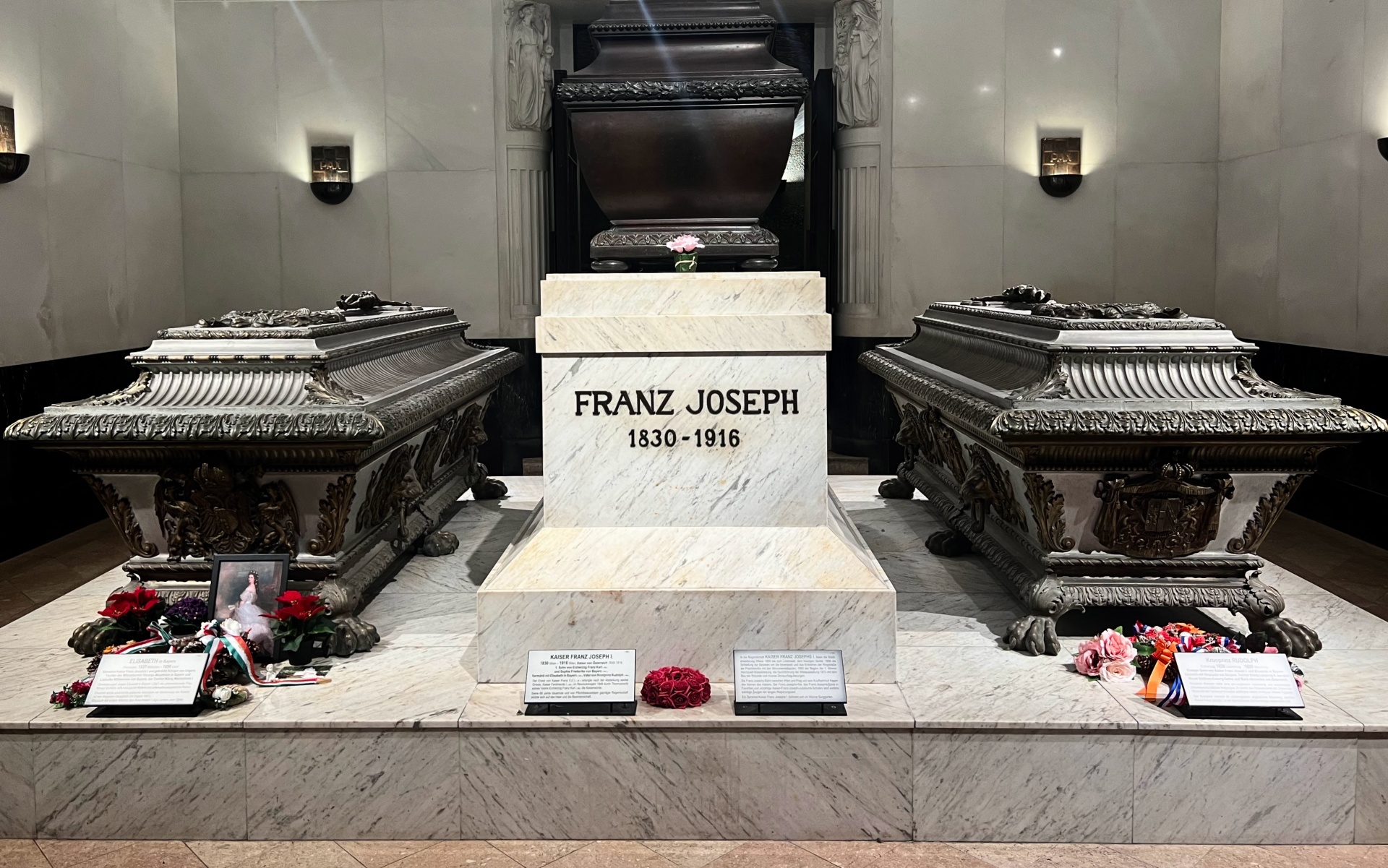
The Habsburgs are long gone but their legacy enshrouds Vienna like a ghost. Below, you’ll find a short profile on the most relevant members of the Austrian branch of the family, which ruled for 600-plus years, from 1278 until the end of WWI. For a deep-dive on how the Habsburgs shaped the history of Central Europe, head this way.

#1 - Rudolf IV, Duke of Austria (1339-1365): Before the Habsburgs, it was the Luxemburg family that ran German imperial politics. In 1356, Luxemburg Charles IV established the seven prince-electors of the Holy Roman Empire in a document that notably excluded Habsburg Austria. A humiliation to the young and ambitious Habsburg Rudolf, he retaliated with one of the great forgeries in history: he fabricated a collection of "historic" documents, Privilegium maius, which claimed that the rulers of Austria were elevated to the highest rank in the Empire with privileges to match (they became Archdukes).
Rudolf was more than just a high-profile criminal; he set out to transform Vienna into a city that would reflect his dynastic ambitions. Emulating the investments that Luxemburg Charles lavished on Prague – he launched a university and started the St. Vitus Cathedral – Rudolf founded the University of Vienna and expanded the Stephansdom. He also annexed Tyrol to the Habsburg dominions. All this, during a very short life (he died at age 26).
His portrait above, today exhibited in the Dom Museum, is among my favorites. Despite the crude rendition, Rudolf’s intense gaze speaks volumes. He is wearing his well-earned Archducal crown as a time-honored expression of dynastic propaganda.
Points of interest: Stephansdom (his cenotaph at the end of the left aisle), Dom Museum (his portrait).
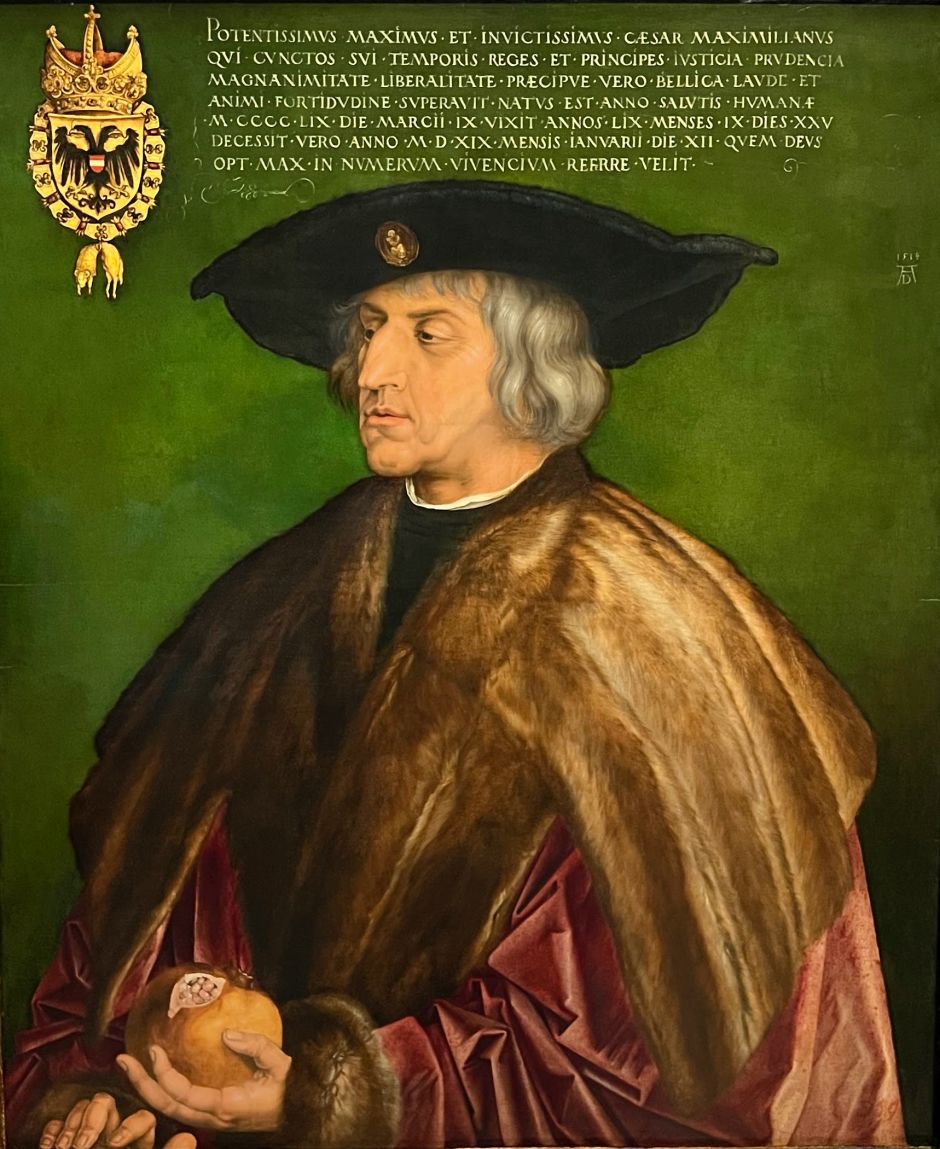
#2 - Maximilian I (1459-1519): The greatest matchmaker in history. With an extraordinarily lucky sequence of arranged marriages, Maximilian expanded the Habsburg family’s territories from a relatively small area in southeast Germany (mainly today’s Austria) to span most of Europe and the New World. His grandson, Charles, even entertained the idea of a universal hegemony – ruling the entire world.
How did he do it? In 1477, Maximilian married Mary, daughter of the deceased Duke of Burgundy, thereby gaining the wealthiest region of Europe – the Low Countries: today’s Holland, Belgium, and Luxembourg. In 1496, he wed his son Philip to Joanna, daughter of the Queen of Castile and King of Aragonia, earning the Habsburgs the recently united Spain with all of its New World possessions and Sicily and southern Italy.
Closer to home, Maximilian devised a double marriage scheme between his grandchildren and the Jagiellonian royal house. This meant that after the 1526 death of King Louis at the battle of Mohács, both the Hungarian Kingdom (today’s Hungary, Croatia, Slovakia, and parts of Romania, Serbia, and Ukraine) and greater Bohemia (today’s Czechia) fell into the Habsburg’s lap.
Hence the well-known saying coined by the Hungarian Renaissance King, Matthias Corvinus: “Let others wage war, you, happy Austria, marry.”
A relentless self-promoter, Maximilian commissioned a bunch of self-portraits to be disseminated across the Habsburg dominions. Most famous is the one by Albrecht Dürer from 1519, shown above, which currently hangs in Vienna’s Kunsthistorisches Museum.
Points of interest: Kunsthistorisches Museum (including its Kunstkammer section).
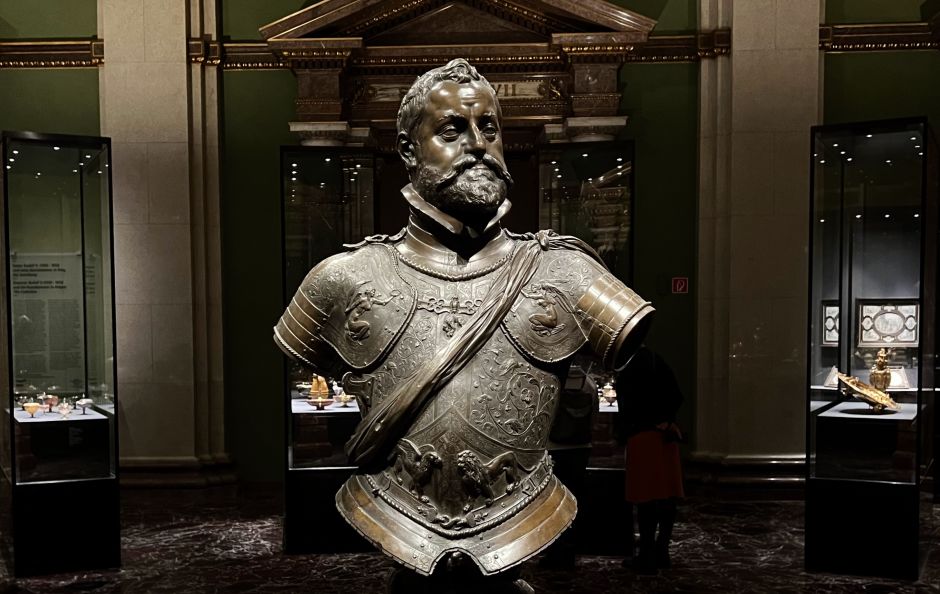
#3 - Rudolf II (1552-1612): An unusual Habsburg, Rudolf lacked the notorious Habsburg Catholic piety and he wasn’t interested in state affairs either. In fact, he moved his court from Vienna to Prague to be farther from the Ottoman battle lines and dedicated his time to studying art, exotic objects, alchemy, and science. He employed astronomers, for example Johannes Kepler, painters, goldsmiths, and had tamed lions and other wild animals roam the castle halls.
He had a refined taste in art and commissioned his Flemish court painter, Bartholomeus Spranger, to decorate the castle with a sequence of Mannerist erotic canvases taken from ancient mythology. He refused to follow the family protocol and marry his cousin, Habsburg Isabella, instead maintaining an affair with Katharina Strada, the granddaughter of his art dealer with whom he had six children. He was prone to melancholy and over time completely withdrew himself from the public, rarely ever leaving the Hradčany Castle.
Rudolf’s “cabinet of curiosities” was famous across Europe and included narwhal tusks – believed to come from unicorns – paper-thin agate and chalcedony bowls mounted on gold and painted enamel, and bezoar goblets. Together with his painting collection and Giambologna statuettes, they are exhibited in Vienna’s Kunsthistorisches Museum. Rudolf also commissioned a gorgeous family crown, the pride of the Imperial Treasury (Schatzkammer) today.
Points of interest: Kunsthistorisches Museum (especially its Kunstkammer section), Imperial Treasury.
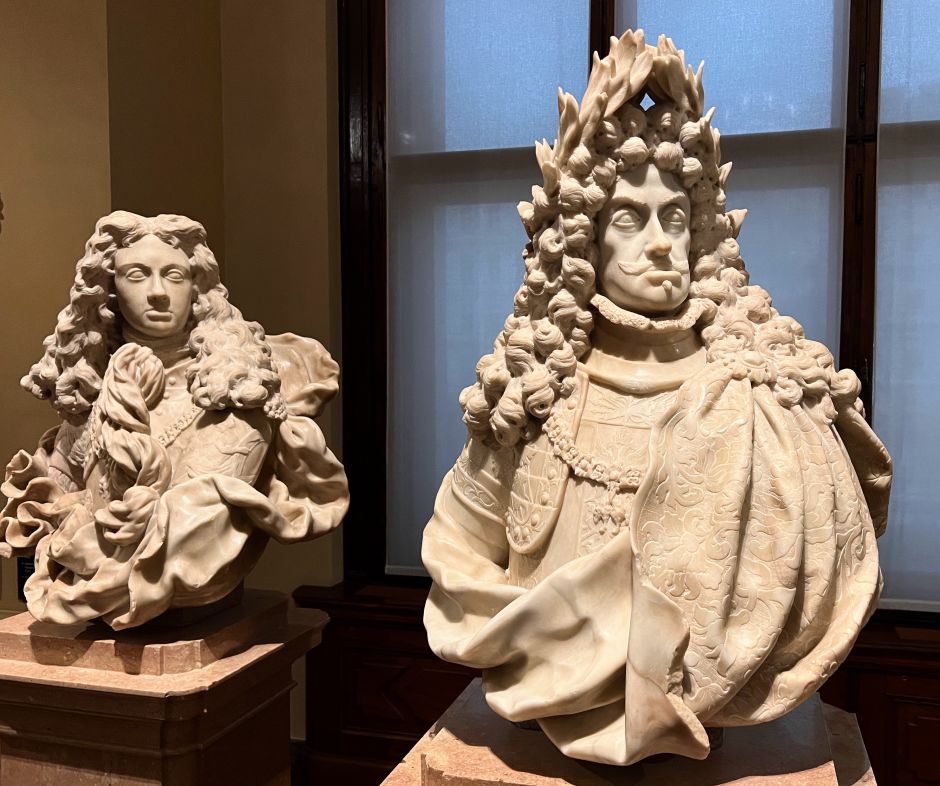
#4 - Leopold I (1640-1705): Leopold oversaw the greatest territorial gains in the history of Habsburg Austria: with help from an international coalition, he recaptured Hungary from Ottoman Turkey, while also containing France’s aggression in Western Europe. Still, Leopold never enjoyed the fame of his great nemesis and exact contemporary, Louis XIV. Why might that be?
Raised in the intolerant milieu of the Counter-Reformation, Leopold, like his father (Ferdinand III) and his grandfather (Ferdinand II), persecuted, expelled, and killed tens of thousands of Protestant residents unwilling to convert to Catholicism. He was indecisive, aloof, pious, and not into state affairs. When in 1683 he was informed that the Ottoman army was advancing toward Vienna to lay siege on the city, he and his family fled in haste. Such cowardice earned him little sympathy from the Viennese.
His greatest legacy today is the plague column he commissioned to be erected on Vienna’s main square, the Graben. Covered in blobs of white clouds and upbeat angels, the monument is still the most dramatic in all of Austria. In line with standard Baroque propaganda, we see Leopold himself, on the pedestal, victoriously pleading to the golden Holy Trinity to save his people from the disease.
Leopold’s passion was Baroque music and opera – he was known to pay his musicians before he paid anyone else. He had an exaggerated case of the protruding Habsburg jaw, the result of generations of severe inbreeding, and some history books, harshly, refer to him as the “ugliest Habsburg.”
Points of interest: Graben's plague column, Leopold-wing of the Imperial Palace.
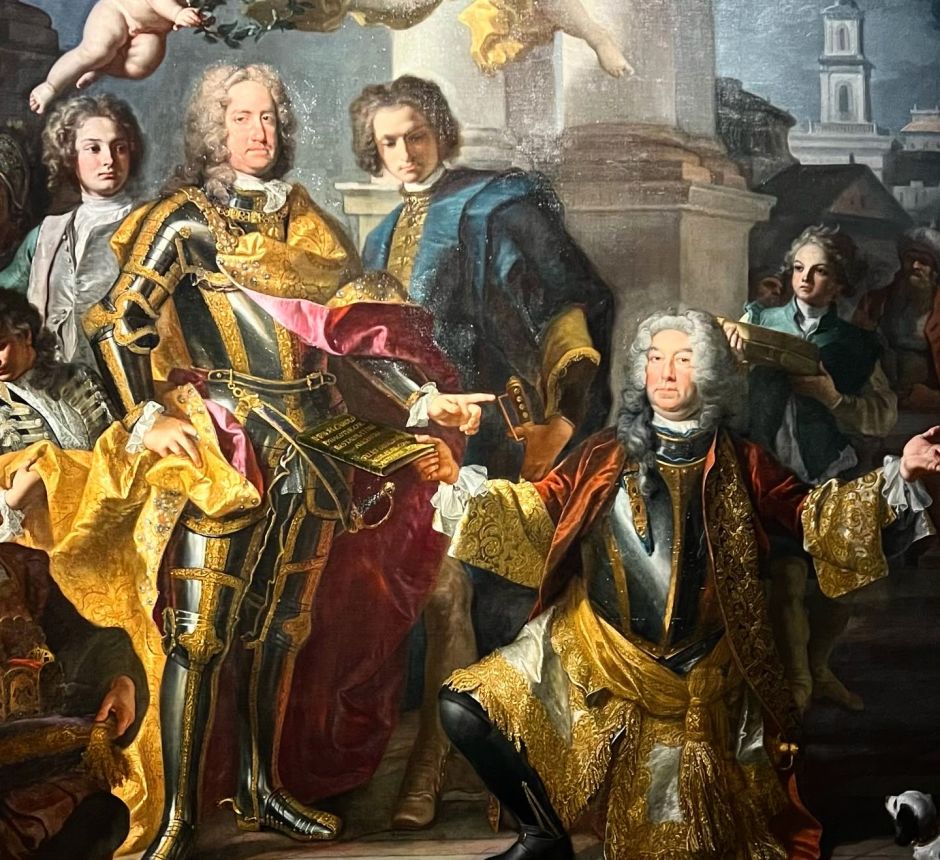
#5 - Charles VI (1685-1740): The Spanish branch of the Habsburgs ended in 1713, but the Austrian side obtained as compensation a bunch of territories that had belonged to their cousins, including the wealthy Spanish Netherlands (today’s Belgium) and most of Italy. This made Habsburg Austria stronger than ever by the time of emperor Charles VI, better known as the father of Maria Theresa.
But Charles, who spent years in Catalonia hoping to attain the Spanish throne against Bourbon Philip V, couldn’t accept the loss of Spain. Back in Vienna, he kept his Spanish royal title, insisted on Spanish food, and surrounded himself with Spanish exiles, who were resented by the Austrian bureaucracy.
Slow and indecisive, Charles’s reign was frustratingly ineffective. Instead of addressing much-needed domestic reforms, he dedicated his long rule to ratifying the Pragmatic Sanction, a 1713 document that would allow his daughter a peaceful succession (Charles had no male heir). Ironically, it was Charles’s inaction and fumbles that prevented the smooth transition of Maria Theresa, leaving her with an empty treasury, an incompetent military, and a patchwork of decentralized states whose loyalties lay elsewhere.
While the Habsburg’s main rivals – France and Prussia – implemented enlightened centralizing reforms, Charles refused to rein in the outsize power of the aristocracy and the Catholic Church. This estate-based feudalist system halted the growth of cities and exploited peasants more than ever.
Vienna’s famous Baroque buildings date to Charles’s reign. In the amazing Court Library visitors can witness Charles’s countless good deeds and glorified journey to heaven as depicted on the ceiling fresco by Daniel Gran. Another Vienna landmark, the Karlskirche, includes a pair of columns as a memento to his beloved Spain.
Charles is said to have expired after an especially gluttonous meal doused in Spanish olive oil. The last word he uttered on his deathbed: “Barcelona.”
Points of interest: Imperial Library (Prunksaal), Karlskirche.

#6 - Francis I (1708-1765): Francis Stephen of Lorraine, the husband of Maria Theresa and himself Holy Roman emperor, is often dismissed as a lightweight: a clumsy general whose political advice the empress habitually ignored. While this may be true, he laid the foundations of two popular Vienna institutions today: the Museum of Natural History and the Schönbrunn Zoo.
Francis Stephen had a price to pay to marry Maria Theresa: France wouldn’t tolerate a Habsburg encroachment on its border, so it only agreed to the Habsburg-Lorraine betrothal if Francis Stephen gave up Lorraine. In exchange, he would obtain Tuscany, whose last Medici Grand Duke was to die soon. When Francis Stephen showed signs of hesitation about this cold-blooded dynastic transaction that meant the loss of his family’s ancestral land, the Austrian state secretary presented him with an ultimatum: ��“No renunciation, no archduchess!”
The wedding took place in 1736 and despite Francis Stephen’s philandering, the marriage was one of the happiest in Habsburg history, yielding 16 children. This nuptial is the reason that Habsburg-Lorraine was the official name of the ruling house.
Francis Stephen’s manyfold hobbies included the collection of minerals, gemstones, fossilized creatures, coins, and rare animals (he was also an excellent financial investor who skillfully managed Austria’s enormous state debt). In 1750, he bought what was the largest collection of natural history in Europe – 30,000 objects – from the Florentine scholar Johann Ritter von Baillou, whom he appointed director of Vienna’s Royal Natural History Cabinet, the predecessor of today’s Museum of Natural History.
Francis Stephen’s live animal collection included parrots, ostriches, flamingos, pheasants, sheep, goats, antelopes, and monkeys. They were contained in a designated park of the Habsburg summer palace, still the site of the Schönbrunn Zoo today.
Points of interest: Museum of Natural History, Schönbrunn Zoo.
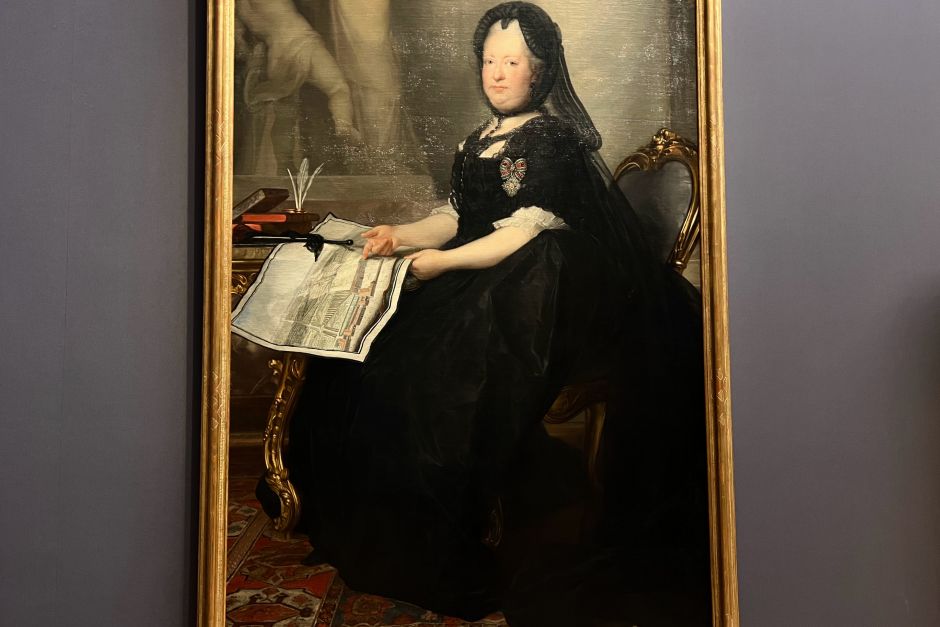
#7 - Maria Theresa (1717-1780): Maria Theresa inherited a mess after the 1740 death of her father, Charles VI – empty state treasury, incompetent military, a decentralized patchwork of territories. Soon, the Bavarian and the Prussian armies pressed deep into the Habsburg heartlands, the family lost the crown of Germany (Holy Roman Empire) and it seemed that Austria and Czechia (greater Bohemia) would be next.
It was from this low point that Maria Theresa revived her empire. She had brilliant political skills and was a shrewd judge of talent. She surrounded herself with enlightened advisors – among them State Chancellors Haugwitz and Kaunitz – who laid the foundations of a rational, centralized, and merit-based state administration at the expense of the Catholic Church and the aristocracy (their model was the enemy: Prussia).
Maria Theresa set limits to the free labor services (robot) peasants had to perform and ran pilot programs to abolish serfdom. Kaunitz convinced her to introduce mandatory elementary education to counter the Baroque-era culture of visual persuasion. When the pope abolished the Jesuit order in 1773, Maria Theresa ordered all Jesuit property be confiscated to pay for the roll-out of a public school system. By the end of her reign, more than 6,000 schools opened across the Habsburg Monarchy.
She also found time to give birth to sixteen children whom she strategically married off to the ruling houses of Europe, most famously Marie Antoinette to Louis XVI of France. She loved spending time in the Schönbrunn Palace which she transformed into the magnificent Rococo treasure we know today, complete with 1,441 rooms.
For good reason, people remember her fondly and Vienna has an enormous Maria Theresa memorial on Maria-Theresien-Platz where the enthroned queen is surrounded by major figures of the Austrian Enlightenment. Paradoxically, the less rosy side of her legacy is that she was a zealous and intolerant Catholic who persecuted Protestants and hated Jews, regularly uttering horrific remarks about both.
Points of interest: Imperial Crypt, Maria-Theresien-Platz, Schönbrunn Palace.
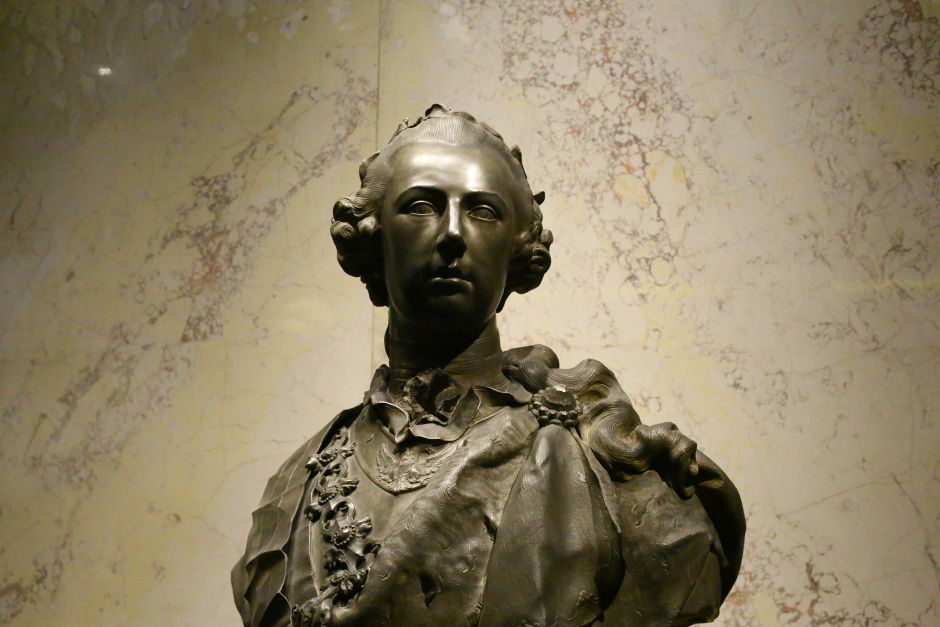
#8 - Joseph II (1741-1790): An unusual Habsburg, Joseph II was very intelligent and learned and couldn’t wait to launch the reforms he thought his mother (Maria Theresa) was too timid to implement. Shaped by the ideals of the enlightenment, Joseph held views that were radical for a monarch in 1780 – he believed in human freedom and equality for all people.
He traveled the countryside to meet farmers and hear their concerns and famously tried his hand at plowing. While Joseph was hailed as a folk hero among peasants and middle-class intellectuals, such as Mozart and the young Beethoven, his idealist reforms ignored the powerful Catholic Church and landed aristocracy. Worse, he had no political skills, was a control freak, and thought he knew what’s best for everyone. He governed only through decrees, churning them out at a lightning speed.
Joseph’s radical agrarian reforms abolished serfdom, permitted peasants to move freely, and capped their taxes. In turn, he started to tax the nobility, rescinding their cherished centuries-old privileges.
He shut down hundreds of “unproductive” Catholic monasteries that lacked schools or hospitals, using their wealth to build parish churches that served their communities with better educated priests. He subordinated the Catholic Church to the state, earning him a protest-visit from Pope Pius VI. After centuries of persecutions, his Toleration Edict allowed Protestants, Orthodox Christians, and Jews to build places of worship and practice their religion.
He opened the world’s largest hospital in Vienna, built schools, and created public parks, for example Vienna’s Prater. He reformed the legal system with a new civil and criminal code under the concept of equality before the law. Torture was abolished and peasants received free legal aid in litigations against their landlords.
Predictably, the aristocracy reacted with armed rebellions, from Belgium to Hungary. After Joseph’s death in 1790, his brother Leopold reinstated the nobility’s tax exemptions and pulled back the abolition of serfdom to restore order. But he preserved most of Joseph’s progressive achievements, which were very significant and with a lasting impact – “Josephinism” came to be a byword for enlightened, secular absolutism.
Points of interest: Josefsplatz, University of Vienna campus (the old General Hospital), Prater, Augarten.
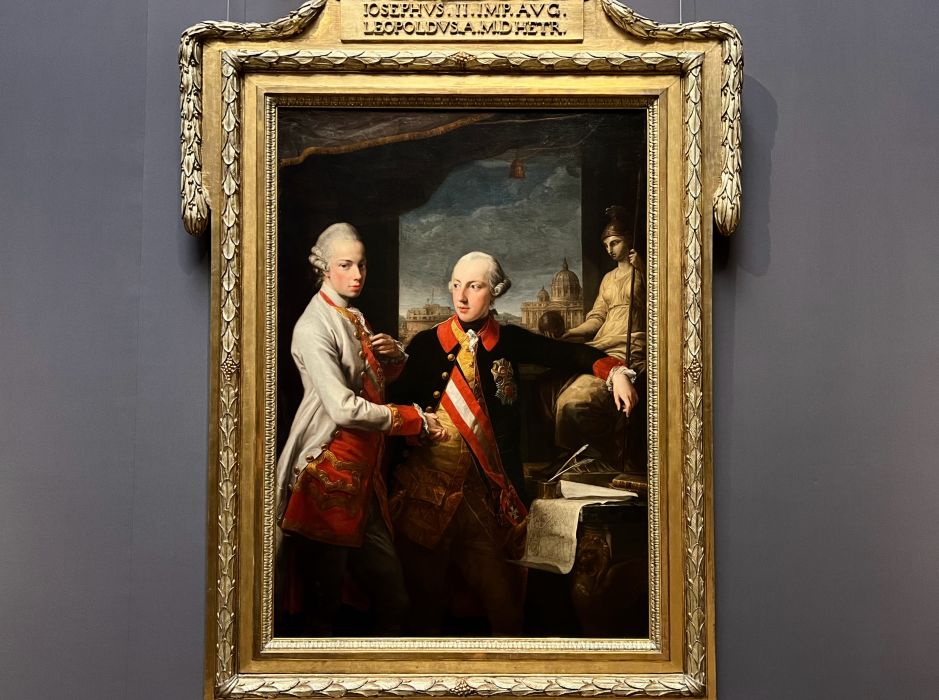
#9 - Leopold II (1747-1792): It was one of the misfortunes for Central Europe that Habsburg emperor Leopold II, younger brother of Joseph II, died after just two years in power in 1792. Before moving to Vienna, Leopold was Grand Duke of Tuscany – his father, Francis of Lorraine, see above, had inherited the Medici throne – living with his wife, Maria Luisa of Spain, and 16 children in the Palazzo Pitti in Florence.
Like his brother, Leopold was an enlightened reformer, but wiser and more conciliatory than Joseph. After chaos erupted from Joseph’s agrarian reforms, he restored order by pulling back its most contentious elements (abolition of serfdom and cap on peasant’s taxes).
But Leoold preserved most of Joseph’s progressive achievements: more freedom for the peasants and for religious minorities; a fairer civil and criminal code; a more secular church that served its people; a healthy economy less constrained by guilds; a strong military; a meritocratic system of state administration; and a rising middle class of educated bureaucrats in the Monarchy’s biggest cities: Vienna, Milan, Brussels, Prague, and Buda-Pest.
After centuries of the Counter-Reformation, Vienna once again emerged as a secular intellectual city whose elites rejoined the Western European mainstream. The Habsburg education and justice systems became an international standard. Leopold was set to continue Joseph’s reforms.
Alas, Leopold died unexpectedly after his doctors mistreated a respiratory illness (bloodletting). It’s ironic that of his 16 children, the oldest, Francis, who went on to rule the Habsburg Monarchy for 43 years, turned out to be the least gifted of all. Francis’s younger brothers included the great general, Carl, the Styrian reformer, Johann, and the brilliant Palatine of Hungary, Joseph.
Points of interest: Augustinerkirche (with Leopold's cenotaph).
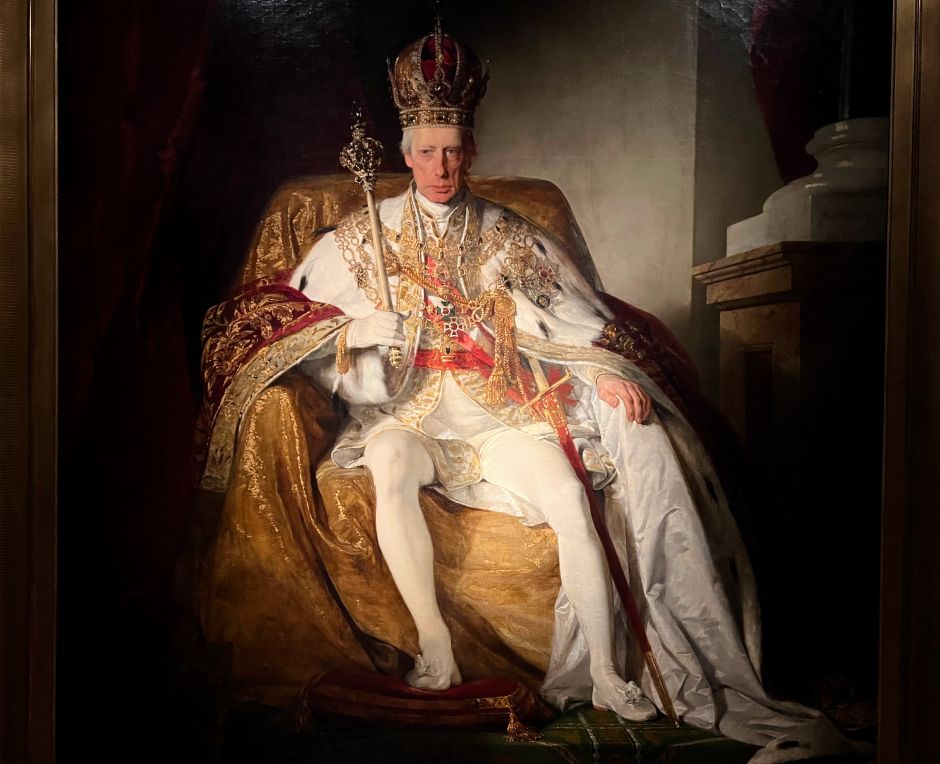
#10 - Francis I/II (1768-1835): The events of the French Revolution profoundly shaped the 43-year-reign of Emperor Francis. Instead of continuing the enlightened reforms of Joseph and Leopold – his uncle and his father – Francis reverted to the safety of the feudal order. He wanted to gain the support of the aristocracy during his drawn-out war with Napoleon's France and he also dreaded what further enlightened progress might bring (Marie Antoinette, the executed queen of France, was his aunt).
The first half of Francis's reign was taken up by the Napoleonic Wars, a long sequence of military defeats and humiliations: Napoleon captured Vienna and the Habsburg Monarchy became a truncated French satellite; Francis was forced to dissolve the Holy Roman Empire after Napoleon allied with himself most of Germany (1806); and he had to watch as the low-born Bonaparte married his daughter, Habsburg Marie Louise (1810).
The Congress of Vienna in 1815 restored the old order and even improved the Habsburg geopolitical position, but there was no return to social progress and meritocracy. Francis and Chancellor Metternich built a repressive state in which censorship and police informers infiltrated every layer of society. They halted the land and the tax reforms, so peasants were once again exploited and paid most taxes. They scaled back university and high school education and demanded that all state bureaucrats swear an annual oath of loyalty.
Internationally, Austria was viewed as the enemy of social progress, a place of reactionary conservatism. Liberals felt betrayed by Francis and Metternich and many left for other parts of Germany. Visitors to Vienna in the 1830s regularly pointed out the absence of intellectuals and writers.
Famously indecisive and a micromanager, Francis couldn’t make or delegate decisions even in the most trivial matters. He would ponder endlessly, for example, which choirboy should receive state scholarship for further studies. His preferred way of dealing with problems was by “letting them lie.”
Points of interest: Furniture Museum, Courtyard of the Imperial Palace, Imperial Treasury (with the painting shown above).
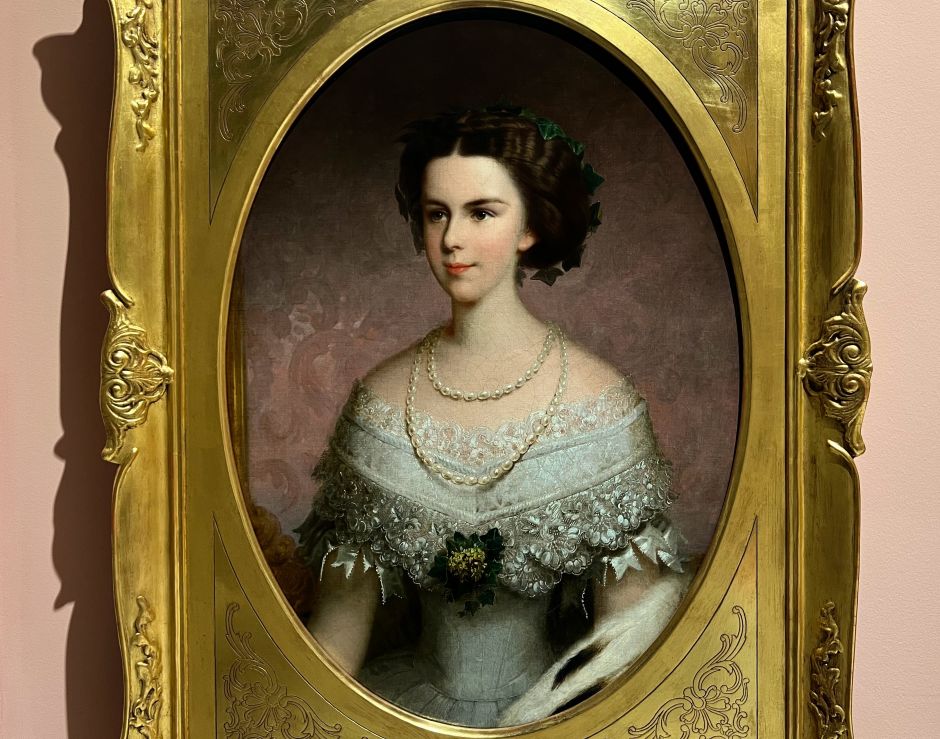
#11 - Empress Elisabeth / Sisi (1837-1898): As a sixteen-year-old, in 1854, Duchess Elisabeth of Bavaria, better known as Sisi, was married to Habsburg Emperor Franz Joseph, her first cousin. His domineering, arch-Catholic mother, Sophie, held complete control over the life of the young couple and their newborn. The free-spirited Sisi resented this and so began her escapes from the Vienna court and her peripatetic life of unending travels.
She stayed away even after Sophie’s 1872 death, feeling that the demands of royal duties would be too taxing on her frail health. Sisi had no interest in socializing with the Viennese aristocracy and viewed the monarchy itself with cynicism, an archaic system ripe for collapse.
Politics didn’t engage her, although she was enthusiastic about Hungary’s quest for independence, pressing her husband to establish the Dual Monarchy of Austria-Hungary. Her sympathies sprang from a romantic notion that Hungarians were an oppressed people whose noble revolution had been brutally crushed in 1848 by her own husband.
Sisi surrounded herself with Hungarian chambermaids – including Ida Ferenczy and Mária Festetics – and spoke only in Hungarian to her youngest child, Marie Valerie. The Hungarian public, which at this point despised Franz Joseph, came to admire its Queen and gifted her the Palace of Gödöllő, outside Budapest, where she enjoyed riding and hunting. (Sisi’s German biographer, Brigitte Hamann, believes that the rumors about Sisi’s affair with Gyula Andrássy, Hungary’s charismatic Prime Minister, have no factual basis.)
While escaping the confines of the conservative Vienna court, she never seems to have found a deeper anchor. The diaries of Mária Festetics portray a sad and lonely life of aimless travels, short-lived hobbies, palaces built and abandoned, people charmed then neglected. Sisi’s children too felt betrayed by their mother’s extended absences. Franz Joseph remained supportive of her but his private letters reveal deep loneliness.
Sisi died the way she lived – tragically, away traveling – when an Italian anarchist in 1898 stabbed her with a dagger in Zürich.
Points of interest: Sisi Museum, Furniture Museum, Volksgarten (Sisi statue).
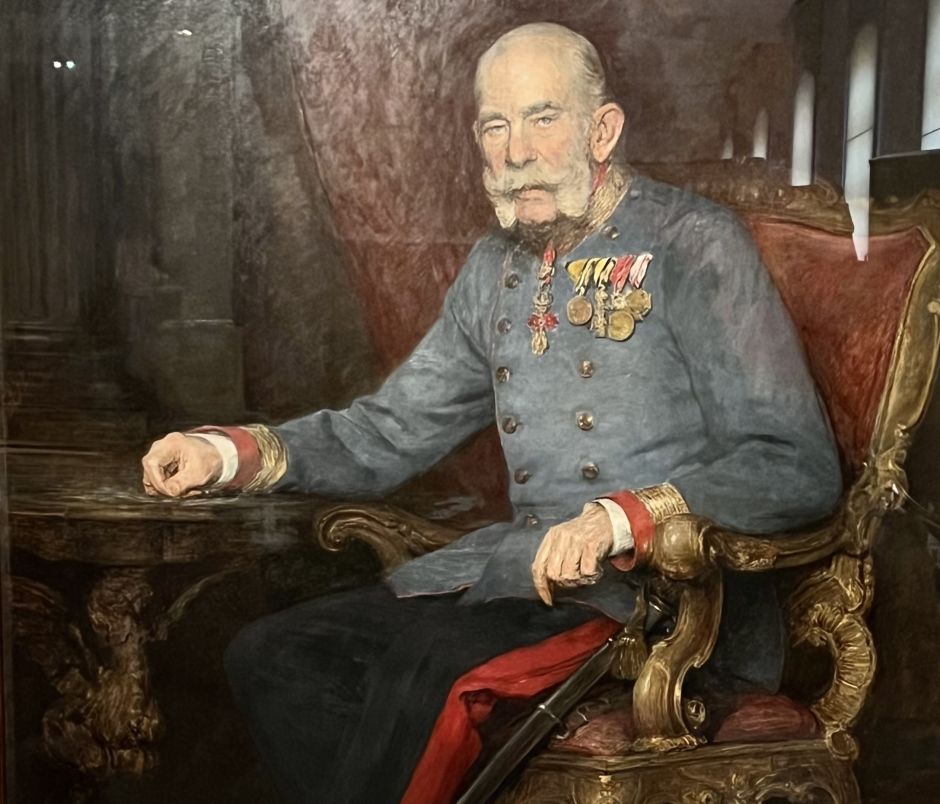
#12 - Franz Joseph (1830-1916): Emperor Franz Joseph went from being a hated military-obsessed autocrat who banned the constitution and executed the revolutionary heroes of 1848, to a widely respected arch-grandfather enjoying the loyalty of the people. Part of this loyalty stemmed from his long reign – he embodied Austria-Hungary – and from the fact that people sympathized with the personal tragedies that afflicted his life, such as the murder of Sisi and the suicide of his son, Rudolf.
At a time of intense nationalism, Franz Joseph successfully navigated the most multi-ethnic country in Europe. Austria-Hungary became a place where Germans, Hungarians, Czechs, Croats, Serbs, Slovaks, Romanians, Poles, Ukrainians, Jews, Slovenians, and Italians lived in security, peace, and increasing prosperity. Whose economy, education system, and culture were fast approaching those in the most advanced countries. For the first time, the Habsburg Monarchy came to be known for its intellectual fields and avant-garde modernism, not just its music. It was the country of Sigmund Freud, Ludwig Wittgenstein, Gustav Mahler, Béla Bartók, Gustav Klimt, Otto Wagner, Adolf Loos, and many others.
In contrast, Franz Joseph himself was a bore. He lacked charm and was indifferent to intellectual stimulus – to books, to art, to conversation. But he was a solid and reliable anchor in a fast-changing Dual Monarchy. Rising at 4:30 a.m. and laboring away all day between rushed meals, he was the dutiful, disciplined, first civil servant of the state. Nobody questioned his personal integrity. His private letters even reveal a capacity for tenderness and – most of all – a profound loneliness (Sisi, selfish and disillusioned by the Vienna court, spent most of her time away traveling).
Despite being a conservative Catholic, Franz Joseph had a remarkable ability to adapt. To the constitution, to democracy, to secularism. He harbored no religious or ethnic prejudices. Tyrolean peasants in the Alps, Czech businessmen in Bohemia, Hungarian nobles in the Alföld, and Jewish merchants in Galicia equally mourned his passing in 1916 after 68 years in power.
Points of interest: Ringstraße, Sisi Museum, Schönbrunn Palace, Furniture Museum, Burggarten.